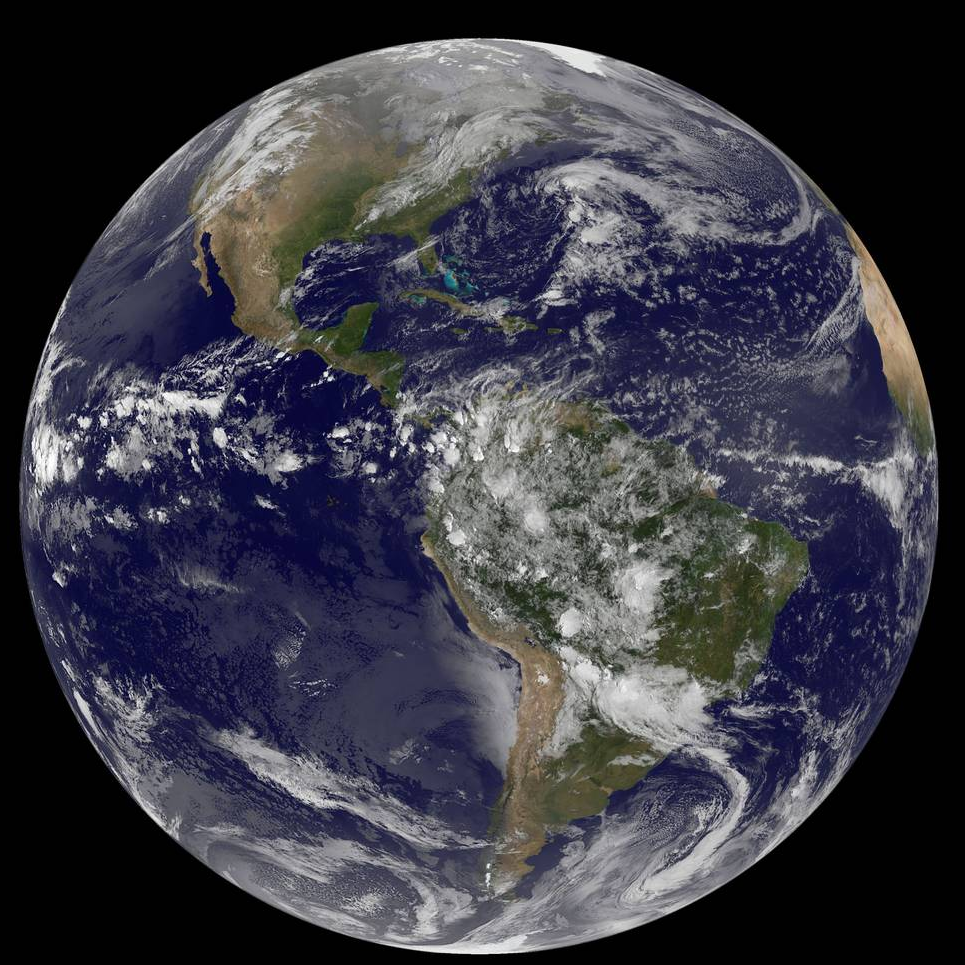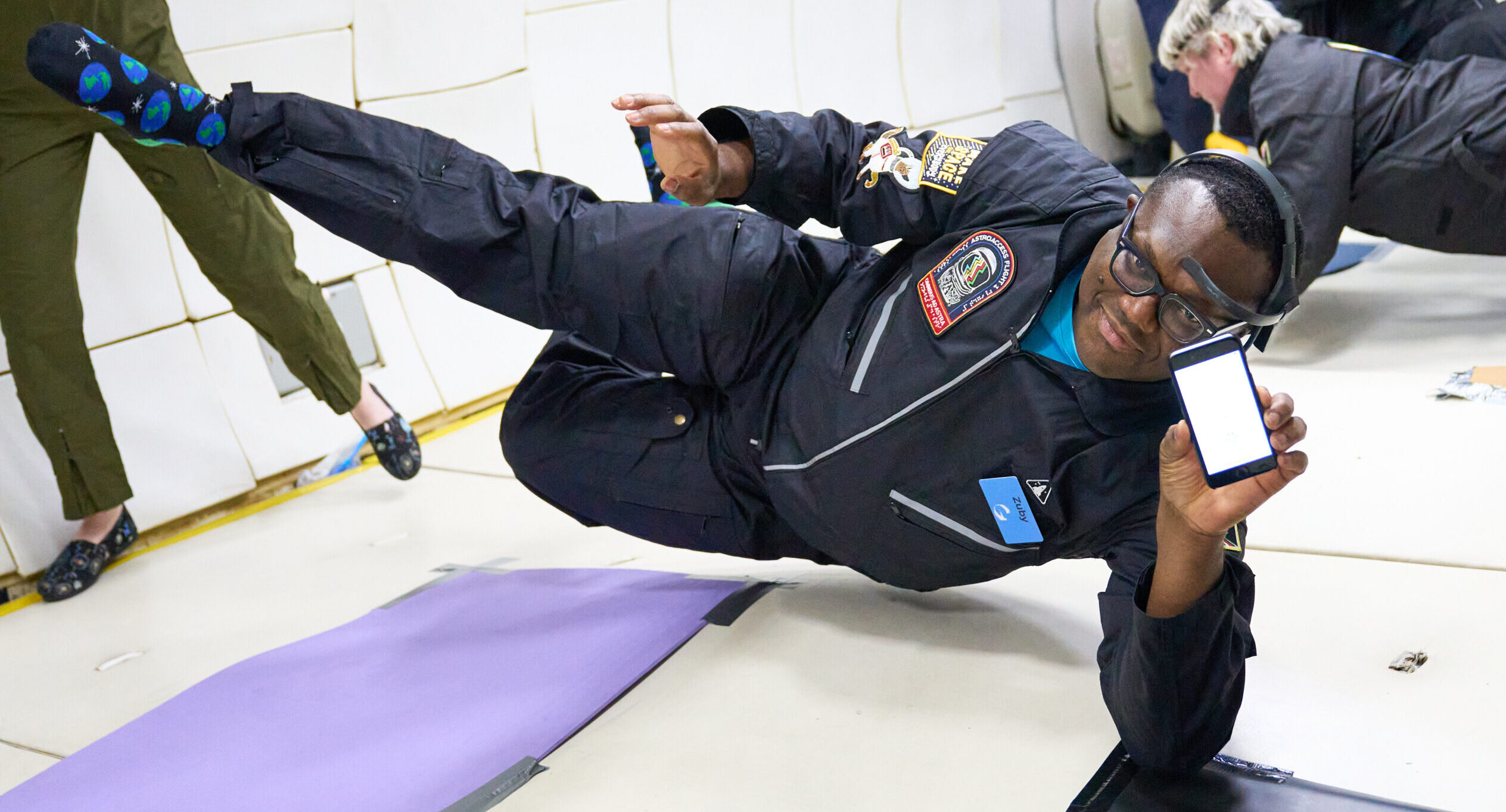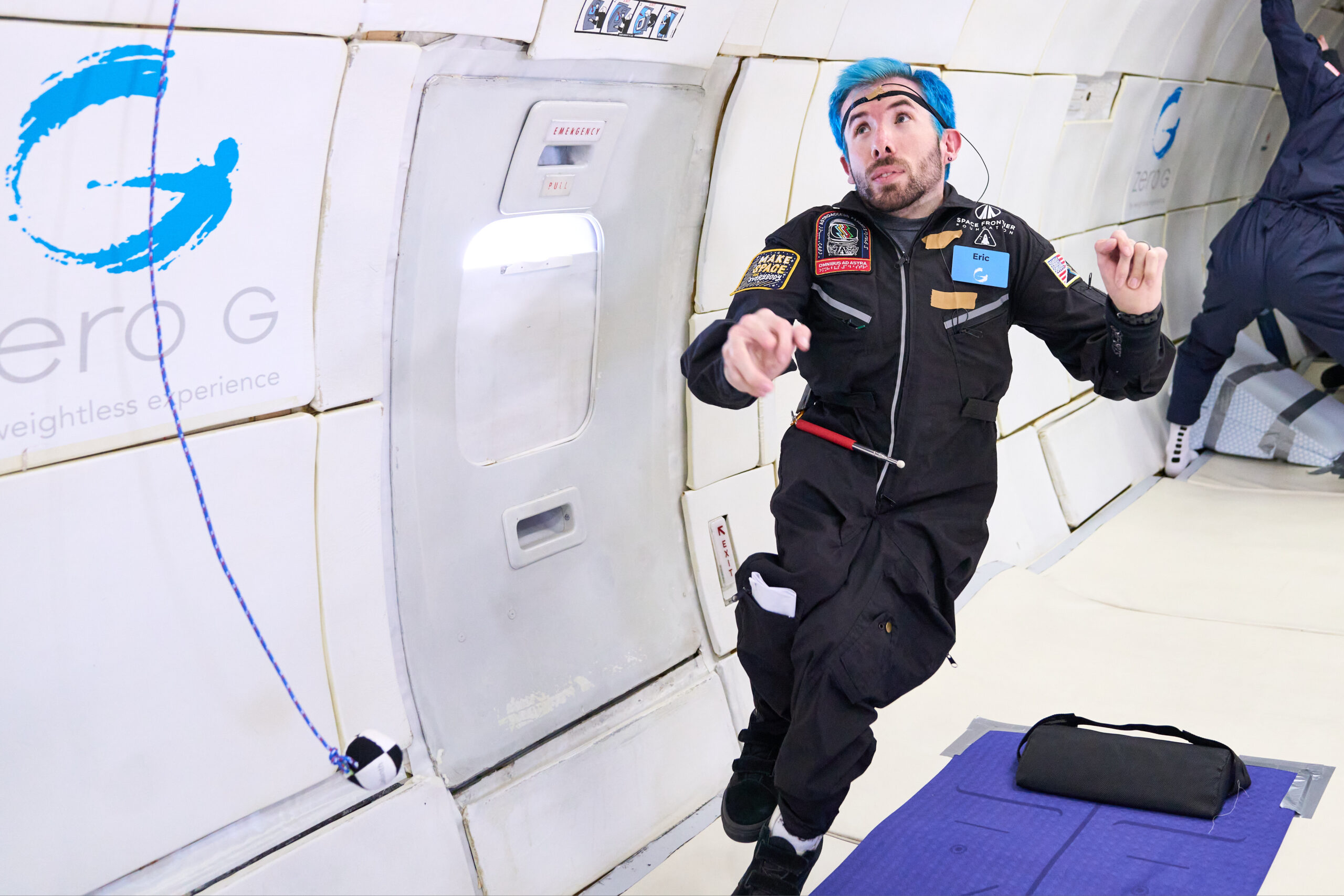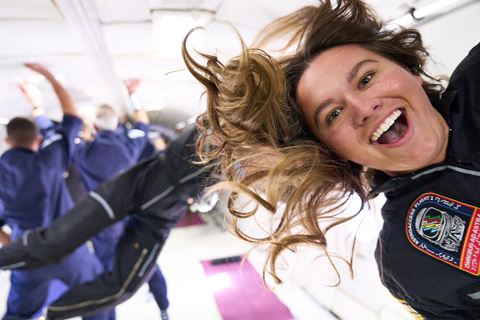ABOUT Mission: AstroAccess
Outer space is not just humanity’s future:
It's a call to rethink life on Earth today.

Image Description: Photo of the Earth taken from space.
Credit: NASA/NOAA/GOES Project.
WHAT IS ASTROACCESS?
AstroAccess is a project dedicated to promoting disability inclusion in human space exploration by paving the way for disabled astronauts. Since its founding in 2021, AstroAccess has conducted five microgravity missions in which disabled scientists, veterans, students, athletes, and artists perform demonstrations onboard parabolic flights with the Zero Gravity Corporation, as the first step in a progression toward flying a diverse range of people to space. These AstroAccess Ambassadors experience weightlessness, test microgravity accessibility tools, and investigate how physical environments onboard spacecraft can be designed so that all astronauts, regardless of disability on Earth, can work and thrive in space. AstroAccess Ambassadors not only participate in a parabolic flight, they use their platform to act as public advocates for global disability access in STEM.

Image Description: Zuby, a low-vision ambassador, holds up a phone that operates the prototype heads-up display technology he is testing on AstroAccess Flight One. Credit: ZERO-G.
The first parabolic flight mission flew on ZERO-G on October 17, 2021, with the ultimate goal of flying one or more team members to space in the coming years. This project was supported through the Whitesides Foundation and the fiscal sponsor of the project is Yuri's Night, a non-profit space advocacy organization.

Image Description: Dana Bolles, a mobility ambassador, talks to Cady Coleman, American chemist and former NASA astronaut, onboard AstroAccess Flight One. Credit: ZERO-G.
WHO RUNS ASTROACCESS?
This project is part of SciAccess, Inc., a 501c3 non-profit dedicated to advancing disability inclusion in STEM. AstroAccess represents a vast network of 30+ partner organizations that play key roles in our mission to advance accessible spaceflight design. The organizing team that runs AstroAccess has over 60 volunteers including aerospace CEOs, renowned disability advocates, student leaders, space science experts, and many more, comprising a diverse team that offers unparalleled expertise at the intersection of space and disability.

Image Description: Eric Ingram, a mobility ambassador, floats in zero-gravity. Credit: ZERO-G.
Motivation

We are dedicated to advancing disability inclusion in space exploration, not just for the benefit of marginalized communities, but for the benefit of all humankind. This project is our first step in the direction of a new reality, where disabled astronauts not only exist but are trusted crew members, essential to the mission. When disabled people have equitable access to all jobs, taking on humanity’s most complex tasks, perspectives change. Access to space changes the worldview not only of aspiring explorers, but of those that employ them, and most importantly, those that look up to them. By generating new opportunities for disabled scientists to succeed and by providing activists a platform, we have the power to inspire the next generation of scientists and world-changers.
Accessibility spurs innovation that benefits all users. Flight safety is always the paramount concern in spaceflight, and many current warning systems implement certain sensory signals for the notification and remediation of anomalies. However, safety systems directly reflect the design criteria; when criteria are re-thought to include a wider range of people and capabilities, these systems can be made safer overall. When we design environments, systems, and technologies for the broadest possible set of users, we not only expand inclusion but yield significant benefits for mainstream users. In an emergency in space, the first system to go offline can be the lighting. Making space systems accessible to blind astronauts would allow all crew members to operate in emergency lighting conditions through tactile and auditory systems. When seconds count, this added functionality could mean the difference between life and death.
Disabled astronauts would have inherent strengths and advantages that could enhance mission success. Due to differences in the vestibular system, some deaf individuals are immune or resistant to motion sickness. NASA has known this since the 1950s, when 11 deaf men known as the “Gallaudet 11” participated in extensive research to help shape the future of human space exploration. During these experiments, NASA proved that deaf space flight participants would be more adaptable to the foreign gravitational environments, and yet there has never been a deaf astronaut. Hearing crew members would also benefit from being fluent in sign language as this would allow for non-verbal communication in any emergency situation that results in auditory anomalies. Universal design not only facilitates inclusion, it inherently results in new system redundancies and functionalities that would improve safety measures for all crewmembers. Visit this article for more information on “The Case for Disabled Astronauts.”

Image Description: NASA Gallaudet research participants chat in sign language while sitting in a zero gravity aircraft before take-off. Credit: U.S. Navy/Gallaudet University collection.
Goals
This project will help pave the way for the future of inclusive space exploration. In the United States, 26% of the population has a disability and yet people with disabilities make up only 8.4% of the country’s employed scientists and engineers (source). Furthermore, only approximately 1% of U.S. doctorate degrees in science and engineering are held by people with disabilities (source). We hope to see these numbers improve following our project. People with disabilities are the largest minority group in the world, yet this quarter of our population lacks equal access to the STEM fields. Meanwhile, companies that prioritize disability inclusion practices consistently out-perform their competitors (source). By beginning to tap into this unrealized talent, we can serve both disabled communities and the STEM disciplines as a whole, enriching science and advancing its benefits for society by welcoming new perspectives into the field. If science is truly accessible to everyone, our world’s innovators and problem solvers will be the best of the best, not just the best of the non-disabled.
AstroAccess will allow the next generation of disabled scientists, students, athletes and artists to see that STEM work is truly possible for them. Women entering the space program sparked a steady increase of women in STEM that has continued to the present day (source). When people with disabilities enter the space program, we expect the same to happen with disabled STEM students. As we give more disabled advocates platforms in STEM, we will see more disabled scientists. We can then expect more science consumers as more members of the public begin to see themselves reflected in scientists in the media. The inclusion of disabled personnel will necessitate changes in space habitats, equipment, policies, and procedures that will benefit everyone. AstroAccess will enable the initial stages of this research, collecting data crucial to the future of inclusive space exploration.
Our zero-gravity missions include operational tasks that a) demonstrate the abilities of disabled crew members to work effectively in a microgravity environment and b) investigate potential changes that could be made to this environment to promote greater accessibility in the future. Tasks include but are not limited to:
Physical Environment Accessibility
- Can sound beacons be used for blind crew members to orientate themselves in 3D space?
- How could tactile markers be used inside the plane cabin to support access for blind crew members?
Communication Accessibility
- How is American Sign Language legibility impacted by floating in microgravity?
- How will important safety cues, traditionally only shared verbally, be efficiently communicated to Deaf and hard-of-hearing crew members?
Safety Procedures
- What emergency egress modifications are needed for crew members with disabilities?
- Demonstrate that all crew members can perform basic safety and operational tasks (e.g. navigate to oxygen masks)
General Microgravity Research
- While our flights focus more closely on the above, AstroAccess crew members may carry out general microgravity experiments that require limited materials. This supports our goal to demonstrate that disabled crew members can perform the same microgravity experiments as their non-disabled peers.
Ultimately, this project will serve all, not just benefiting those with disabilities, but making it so that the ideas, experiences, perspectives, and strengths of disabled students, scientists, and space explorers can benefit the world.
Join us as we take this next step towards advancing access to space for all.

Image Description: Mary Cooper, a mobility ambassador, onboard AstroAccess Flight One. Credit: ZERO-G.
